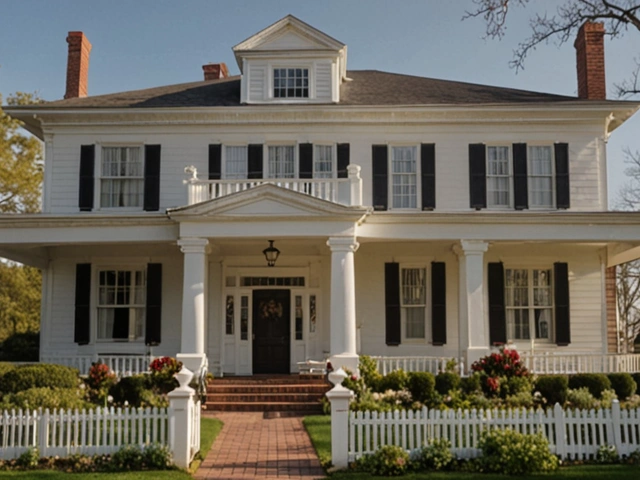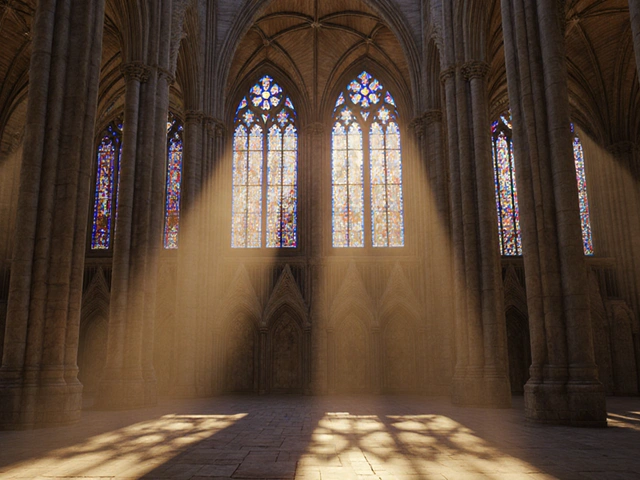The Unveiling Darkness behind Gothic Architecture
As I sit here on this chilly evening in Perth, with Mango, my cockatoo lingering nearby, I am captivated by gothic architecture - those exquisite giants from the Dark Ages casting long, playful shadows into our modern world. Gothic architecture, my dear readers, is not merely a style, but a journey into the intimate depths of human ingenuity and artistic expression.
An Introduction to the Gothic
The term Gothic originally denoted the Goths, a Germanic tribe, and was later used to illustrate the architectural style that emerged in Europe, specifically France, in the late 12th century. Contrary to popular belief, Gothic architecture has little to do with the Goths. The term was purportedly coined by Giorgio Vasari, an Italian painter, who denigrated it as barbaric and unrefined. Boy, was he wrong!
The Gothic style was nothing like the heavy and solemn Romanesque architecture that preceded it. It was a burst of light in the Dark Ages, boldly proclaiming a departure from the mundane. Articulated through pointed arches, ribbed vaults, flying buttresses, intricate traceries, and towering spires, Gothic architecture truly encapsulates the spirit of the medieval era.
The Fanciful World of Pointed Arches
Now, let's initiate our journey in the awe-inspiring world of these darkly romantic structures. Pointed arches, the bread and butter of Gothic design, were more than a stylistic choice - they were a utilitarian revolution. These arches distribute the weight of the building more evenly, rendering taller, airier structures possible and giving birth to the skyscrapers we see today. Not merely structural stalwarts, these arches were a canvas that allowed medieval artisans to narrate their tales through intricate carvings and gildings. Everywhere you look, these arches would speak to you - sometimes in whispers, other times in roars.
Under the Vaulted Heavens
Following closely on the heel of the pointed arches are the spectacular ribbed vaults. Gothic architects intrigued by the mystical union of earth and sky, ventured to mirror this cosmic dance in their creations. Whever I step inside a Gothic building, I find myself awestruck by the high, ribbed vaults which, in their daring ambition, seem to be reaching for the heavens. Is there anything more divine?
Defying Gravity with Flying Buttresses
Proceed to the exteriors of your Gothic structure and you will behold the drama of the flying buttresses in play. These glorious entities allowed architects to transfer the structure's weight to outside pillars, miraculously making the walls thinner and the buildings taller. These buttresses were no less than audacious acrobats, navigating the forces of gravity and balance with absolute fearlessness. Just like Mango, my cockatoo, these constructs defy gravity in the most spectacular fashion.
Veiling in Traceries and Towers
As we continue our intellectual saunter, can we overlook the impact of traceries and towers? Absolutely not! Gothic architecture is akin to lacework in stone and the soul of this intricate rendezvous lies in the traceries. This detailed stone-carving is the architects' poetry in stone, a paean to their undying spirit. This, paired with the enigmatic towers, accentuates the vertical lines, reaching out to the limitless skies and glorifying the mortal world with a celestial aura.
The Cathedral, a Symphony in Stone
And of course, who could mention Gothic architecture without giving due credit to the cathedrals? These monoliths are the perfect orchestration of all aforementioned elements, standing tall as the epitome of human aspiration and achievement. Whenever I encounter these masterpieces, I am transported back to the Dark Ages, marvelling at the people who dared to dream so high and craft so exquisitely despite the tumultuous times they lived in.
From the Dark Ages to the Modern
Fast forward to the 21st century, Gothic architecture still whispers into our ears the tales of romance from the forgotten Dark Ages. Our cities, with their steel and glass, may seem worlds apart from the medieval era, but the shadow of Gothic romanticism lives on, continuing to cast its spell on countless souls.
Considering what was presented, isn't it peculiar to think that this marvel, which we now admire, was initially demeaned as "Gothic"? Life has a funny way of turning things around! Much like my spirited cockatoo, Mango, Gothic architecture too once ruffled the feathers of convention only to emerge as an enduring symbol of human creativity and resilience.





